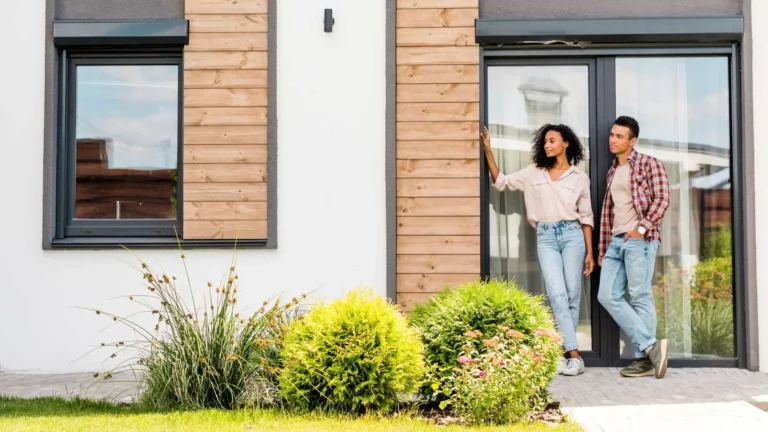Table of Contents
Among other dreams, buying a house is the biggest one for most of us. Some use years of saving, some take loans, while others struggle all their life in a rented place. Calling a small place your own in this world is a great feeling. People new to saving should start saving money for a down payment for their house. No matter how hard you save against inflation, buying a house every year becomes difficult.
This article will help you learn how to save money for your down payment. With practical tips, you can plan and strategize your savings. You can also monitor your expenses closely and save whenever possible to manage your money better. How to save money for a down payment on a house? Let’s explore this topic.
Saving for a down payment on a house is one of many people’s most significant financial goals. Here’s a practical, step-by-step guide to help you do it effectively.
The Importance of Saving for a Down Payment
The more money you save for the down payment, the less the loan you have to take. This will reduce your interest rate and mortgage amount significantly. It’s advisable to save at least 25% of your house price as a down payment.
Sometimes, people only save the minimum required percentage for the down payment. This not only burdens you with a considerable loan amount but also increases your loan terms. It will increase your monthly payments, poor loan, and longer repayment terms. This is why you must plan to save for a down payment as early as you can. You also need to save a small emergency amount to manage loan payments in case something happens.
Setting a Realistic Savings Goal
Realistic goals are an essential factor to consider while saving for a down payment. You might plan a dreamy castle or a lavish villa for yourself, but most such things are out of your budget in the real world. This is why you need to decide what to look for in a budget-friendly home and how to plan to save for it.
You can learn how to save better with emergency funds, strategic investments, and exploring opportunities. You can also get help from a financial advisor to plan future goals and investments accordingly.
Understanding Different Mortgage Options and Down Payment Requirements
Every mortgage has its requirements. It is essential to understand their benefits and drawbacks before deciding which one to go with. Whether it is an option with minimum interest but rigid loan terms or flexibility with interest rates and loan terms, you must understand it well. This will allow you to put your best foot forward and make informed decisions while buying your house.
Down Payment Requirements:
- Standard: Generally, a conventional mortgage requires a down payment of at least 3% to 5% of the home’s purchase price. However, to avoid private mortgage insurance (PMI), you’ll likely need to put down at least 20%.
- Fannie Mae/Freddie Mac Loans: These government-sponsored entities offer conventional loans with down payments as low as 3% for first-time homebuyers or those who meet certain income or property guidelines.
Creating a Budget to Maximize Savings
When creating a budget, it is essential to consider all your goals and plans. You need to trim a few wants and twerk a little to help them adjust to the money in hand. This is where a budget with detailed information and specifics can help you. You must plan out how much you need and when to plan out statistics for savings.
Once you understand your assets, savings, and investments, you can understand how to use them to get better returns. You can use apps like Beem to manage your expenses, pay your bills, and help multiply your savings quickly. With strategic planning, you can maximize your savings and improve your returns for exponential growth in your savings.
Cutting Unnecessary Expenses to Boost Savings
Cutting unnecessary expenses is a great way to boost your savings. That, too, without making drastic lifestyle changes, can help you improve your savings in the long run.
Here are some strategies to help identify and eliminate these costs:
1. Track Your Spending
Knowing where your money is going is essential before you can cut unnecessary expenses. Use apps or spreadsheets to categorize and track your spending. Identify areas where you consistently overspend.
2. Cancel Subscriptions You Don’t Use
Many people pay for services they don’t fully use. Take a look at:
- Streaming services (e.g., Netflix, Disney+, Spotify)
- Gym memberships
- Magazine or digital subscriptions
- Software or app subscriptions
If you rarely use something, consider canceling it or downgrading to a cheaper plan.
3. Review Your Insurance Policies
Ensure your insurance provides the coverage you need at a reasonable cost. You can:
- Shop around for better rates or bundles
- Increase your deductibles to lower premiums
- Review life or health insurance to ensure you aren’t over-insured for your needs
4. Cut Down on Dining Out
Eating out frequently can add up quickly. You can save by:
- Cooking more meals at home
- Meal prepping to reduce the temptation to grab takeout
- Bringing lunch to work instead of dining out
5. Shop Smart
When you do need to shop, do it strategically:
- Take advantage of sales, but only buy what you need
- Use coupons, cashback apps, or price-comparison tools
- Buy generic or store-brand items instead of name brands

Exploring Additional Income Sources
Most people work to pay their bills or to save for a fun treat. However, saving money as a beginner can be challenging. Most responsible adult try to cut out fun to maximize their savings. If you are determined to buy your own place, you must explore additional options to earn money and save better.
You can babysit, freelance, or work part-time jobs on your weekends. You can also teach or tutor kids younger than you to earn money. Exploring all arenas to save maximum before moving out is better. This saved sum can help you live comfortably for a few months and will help you save an emergency fund for difficult days.
Utilizing Down Payment Assistance Programs
People who struggle with saving money for down payments can use assistance programs to speed up the process. These down payment assistance programs help homebuyers save on upfront fees. They do not require any repayment, but ask you to submit various forms to ensure your financial conditions are sound. They will check your tax credits, other grants, and loans in your name before approving any amount for the down payment.
How Beem Can Help Save Money for a Down Payment
When planning for long-term goals such as a parent’s retirement, keeping track of expenses becomes challenging. With Beem, you can manage your bills, pay off your pending payments, and enjoy a relaxed financial arrangement. This will help you understand your payments better and save a larger sum with flexible strategies.
With Beem, you can save and invest more efficiently and strategically. Whether it is a high-yield savings account that offers returns of up to 5% APY annually or other investment opportunities, you can enjoy a more secure financial future with Beem.
Conclusion
Buying a house is a huge decision, and it takes at least a few years to plan and save. But with strategic planning, you can speed up the process. You must plan your goals with specifics and determine how much you must save. You should start your house-buying journey by researching houses available in your preferred area.
Beem also offers features to support budgeting, expense tracking, and savings goals, making it easier to save for baby-related costs. By allowing you to categorize expenses and set custom alerts, Beem helps keep you on track with your budget, ensuring you don’t overspend on unnecessary items. It also provides tailored tips, offering additional support for those preparing financially for a house. Download the app here.
FAQs for How to Save Money for a Down Payment on a House
How much should I save for a down payment on a house?
Most loan providers ask for a minimum down payment of 5% on the house. But please save over 25% as a down payment. This will help you save a lot of money and reduce your loan period significantly.
What are the best ways to save for a down payment?
You can save small amounts of money every month, plan an investment, or look for a down payment assistance program to help you save a significant amount for the down payment.
Are there any programs to help with down payment costs?
Yes, down payment assistance programs help people with the upfront costs of buying a house. They look at applicants’ financials to determine worthy applicants, and you don’t have to pay them back.
How can I save for a down payment on a tight budget?
You can increase your income sources, work a few extra hours, or sell something you own to save enough money for a down payment. If you have family or friends that you trust, you can also ask for a loan from them to help you collect the upfront cost.
What are the different mortgage options and their down payment requirements?
There are a variety of loans, such as conventional loans, FHA, VA, and some construction loans, depending on your requirements. You must look into their requirements and needs to determine which is best for you.
















































